The Argar Society originated in eastern Andalucia and western Murcia about 2200 BC
By Nick Nutter | Updated 11 Apr 2023 | Andalucia | History |
Login to add to YOUR Favourites or Read Later
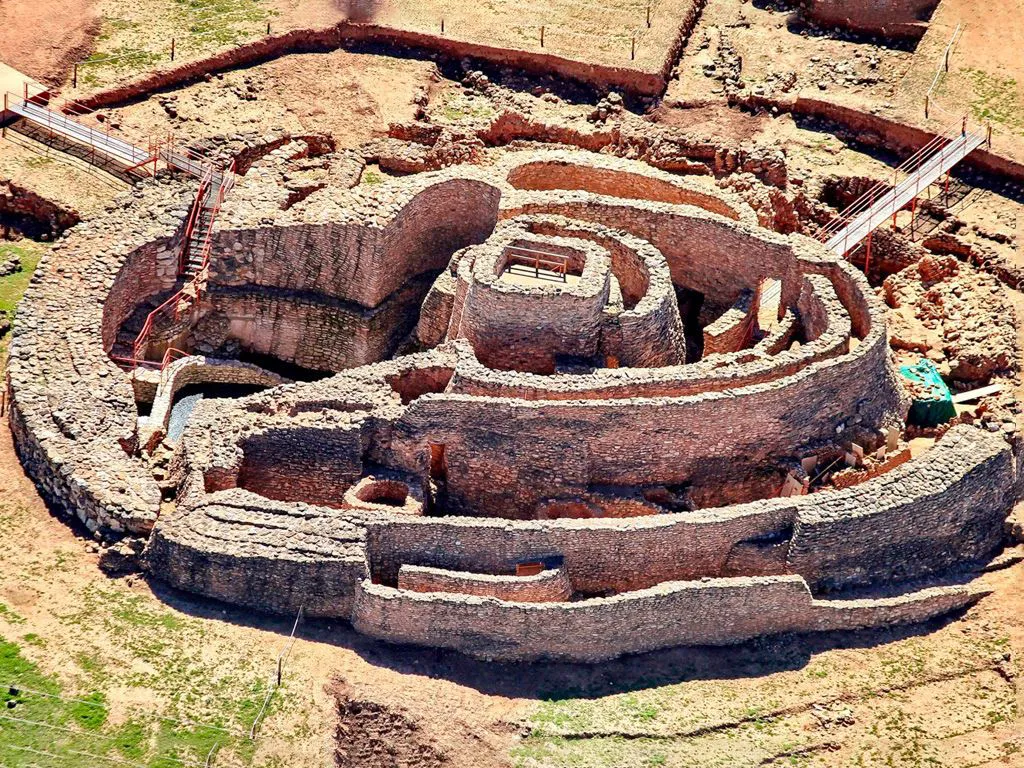
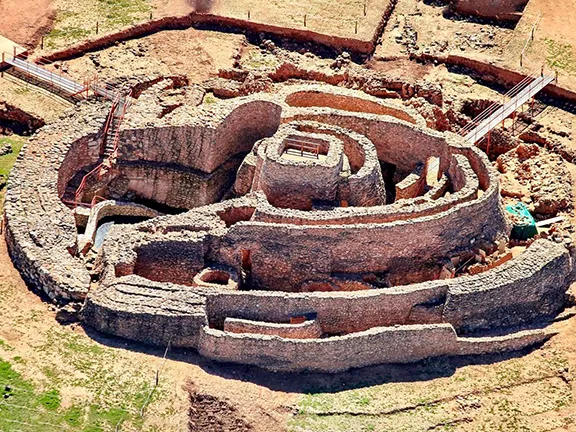
Motilla in the valley of the Rio Azuer, Cuidad Real
There is no evidence to suggest that the Argaric people of the Argar society were any way different physically to their predecessors who occupied and influenced a core area in Almeria, the Los Millarians, although the ‘event horizon’ between the two cultures is often linked with the abandonment of the Los Millares settlement about 2200 BC. Neither is there any evidence to suggest that the Argarians were invaders that took over the Los Millarian territory. The archaeological evidence indicates that Los Millares was already in decline by the year 2200 BC, with only the inner ‘citadel’ still occupied and the three outer ‘fortified walls’ beginning to crumble. Citadel and fortified walls are in inverted commas because it is still debateable whether the Los Millares walls and bastions were designed for defence or some other purpose. The stratigraphical sequences end with a layer of fire destruction but no other evidence of violence, arrowheads or bodies for instance, and no evidence of further occupation between 2200 and 2000 BC which does seem to indicate the Los Millarians burnt their own settlement before leaving.
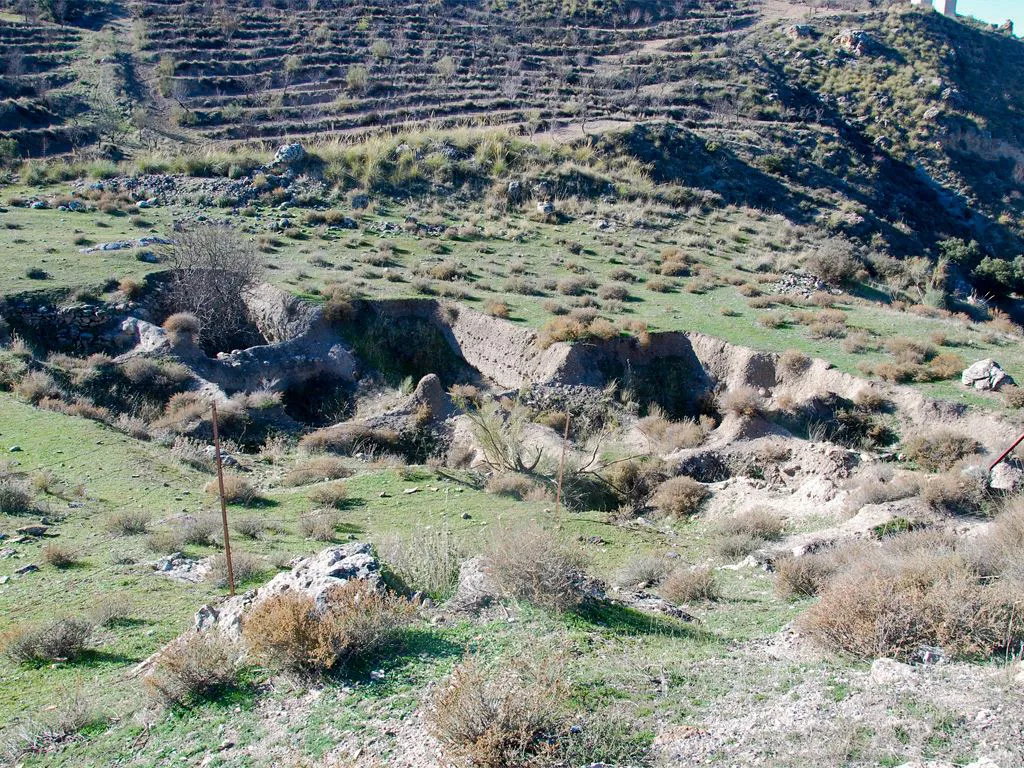
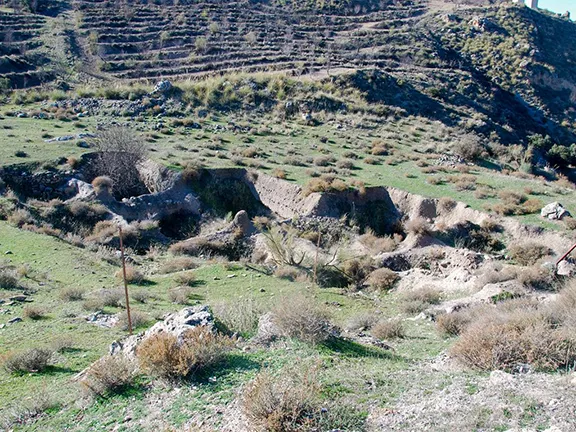
Angosturas near Gor in Granada province
It has been suggested that, because various aspects of the ultimate Argarian society, a new style of swords and certain elements of pottery style, and the design of the fortifications at La Bastida for instance, so strongly resembled elements of societies in the eastern Mediterranean that they were migrants from the east. There is little concrete evidence, and lately, no DNA evidence to support this suggestion.
The geographical clustering of the early Argaric settlements near the coast has suggested to some that the initial 2,500 square kilometres was colonised from the sea. It is true that at the same time as El Argar was being built in the Vera basin in Almeria, the four major Balearic Islands were being colonised by populations probably coming from northern Catalonia and/or southern France around 2300 – 2100 BC. It is also true that La Bastida, a founding settlement and one key to the centralisation of the area, is 56 kilometres from the coast and, unlike in the Balearic Islands, where the pottery styles, bone tool manufacturing and funerary rites can be closely related with those in the north-western Mediterranean, the origin of the architectural, economic, and ritual practices that are identified with the Argarian society cannot be placed in a single archaeological region.
It has to be accepted that El Argar was a home grown society so the real question is how and why did the society develop as it did. To get an inclination as to the answer to that question, we have to look at what was happening around the year 2200 BC.
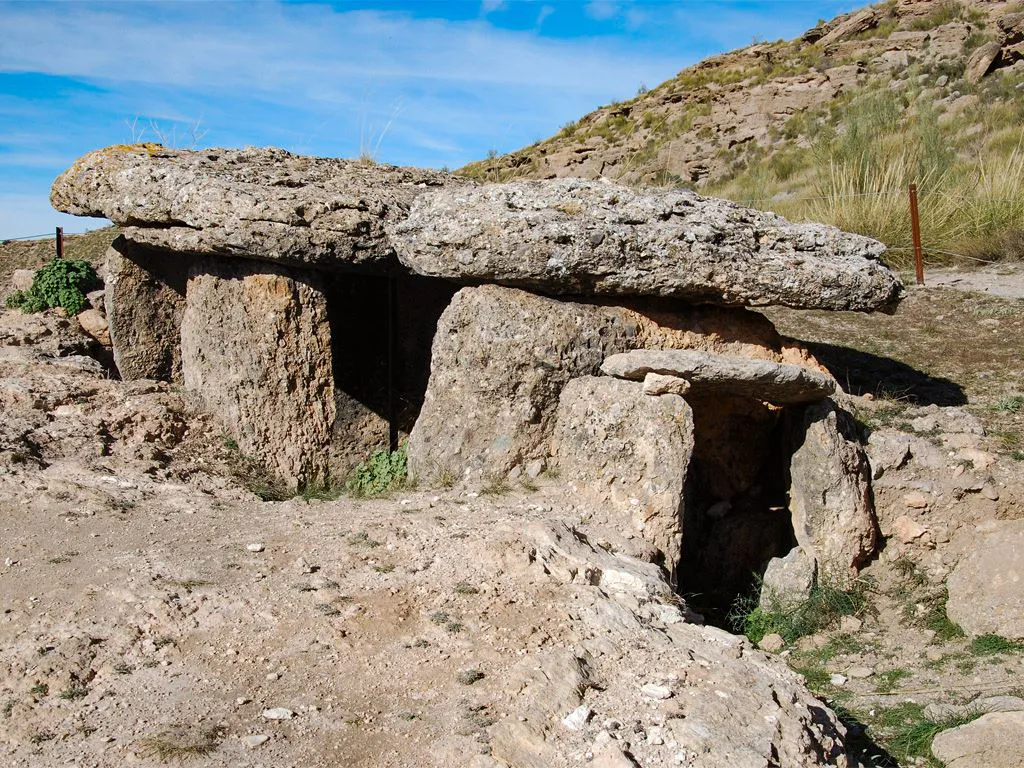
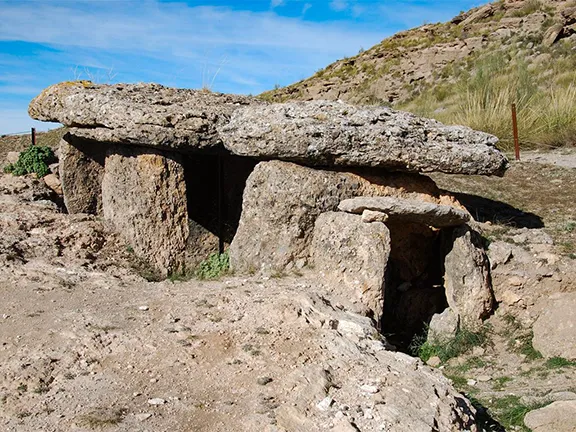
Dolmen 134 at Gorafe
Climatologists tell us that, starting around 2200 BC, a sudden climate change, that probably lasted the entire 22nd century BC, brought a severe drought to many parts of the northern hemisphere, including the Mediterranean basin. The event even has its own name, the 4.2 kiloyear event. It has been hypothesised to have caused the collapse of the Old Kingdom in Egypt as well as the Akkadian Empire in Mesopotamia, and the Liangzhu culture in the lower Yangtze River area. The drought may also have initiated the collapse of the Indus Valley Civilisation, with some of its population moving south-eastward to follow the movement of their desired habitat, as well as the migration of Indo-European-speaking people into India.
In the Iberian Peninsula, the effects of the 4.2 ky event were not uniform. In the south east, Murcia and Almeria, the drought was most pronounced. It may even have caused the Los Millarians to abandon their territory and move west down the Guadalquivir river valley to less drought ridden areas. The effects of 4.2 ky event appear less pronounced the further west you go so that, as you approach the Atlantic Ocean in the far west of the Iberian Peninsula, there is hardly any evidence of a drying event.
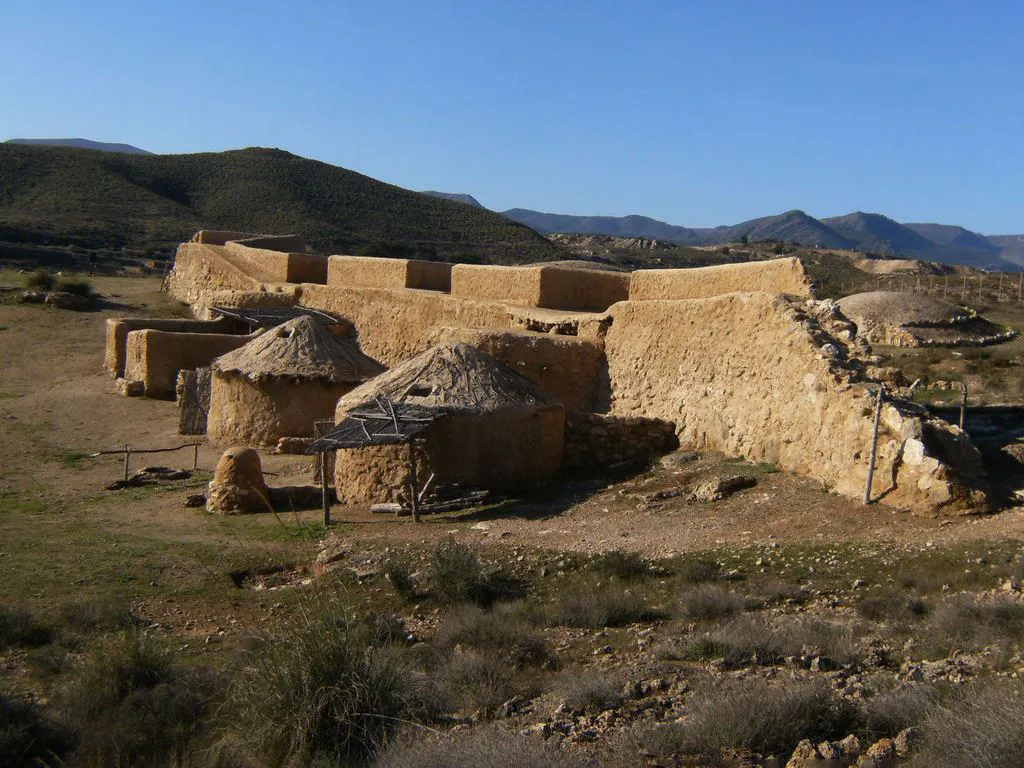
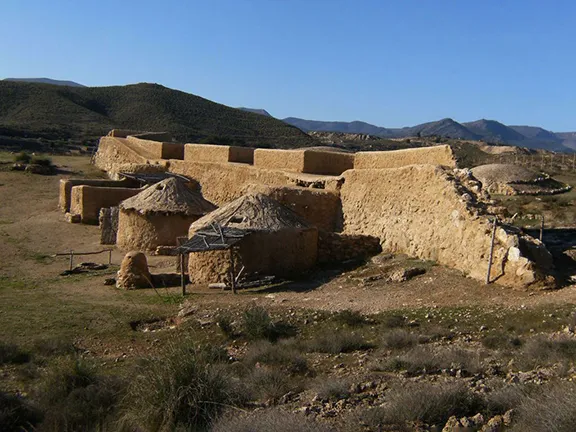
Los Millares, Almeria
Harsher growing conditions and less regular rainfall caused a drop in the population as people migrated to pastures new. The few that remained had to adopt different strategies to survive. The strategy chosen in the Murcia - Almeria areas was to grow barley, a crop that requires less water than other cereal crops, to the detriment of other crops. Strong individuals emerged to control the storage and distribution of the barley. Once given a little power, the same individuals began to enhance their own reputations by adopting an ever increasingly privileged and lavish lifestyle and all else flowed from there.
The imposition of a few leaders over a larger population may even have been welcomed by the majority, at least at first, if the onerous conditions imposed were portrayed as ‘its for your own good’, a common ploy amongst politicians today and, no doubt, nowhere near an original tactic. Arguments that further bolster this supposition are given below in the section dealing with the initial and sudden appearance of the Argarian people.
Indirect evidence for this change in survival strategies may be found at places such as Gatas. Occupied prior to 2200 BC, there is a charcoal level corresponding to the period about 2200 BC where the previous dwellings were burnt, followed by new build by Argarians. An ‘out with the old’ – because it failed as a system, and ‘in with the new’ – because it promises to be better. Burnt layers by the way, should not automatically be interpreted as a result of violence. Many Neolithic communities throughout Europe appear to have ritually burnt their settlements prior to moving on. In some areas ritual burning occurs every generation or so.
The same ethos may be behind the Argarian policy of shunning the features that defined previous communities. El Argar contexts are defined by the absence of typical Bell Beaker pottery: specialised flint production, decorated stone and bone idols, round dwellings with stone foundations, walled or ditched enclosures, and collective burial rites. Almost as if the Puritans had moved in and thrown out decoration, ornamentation and celebration to reflect a new, harsher reality.
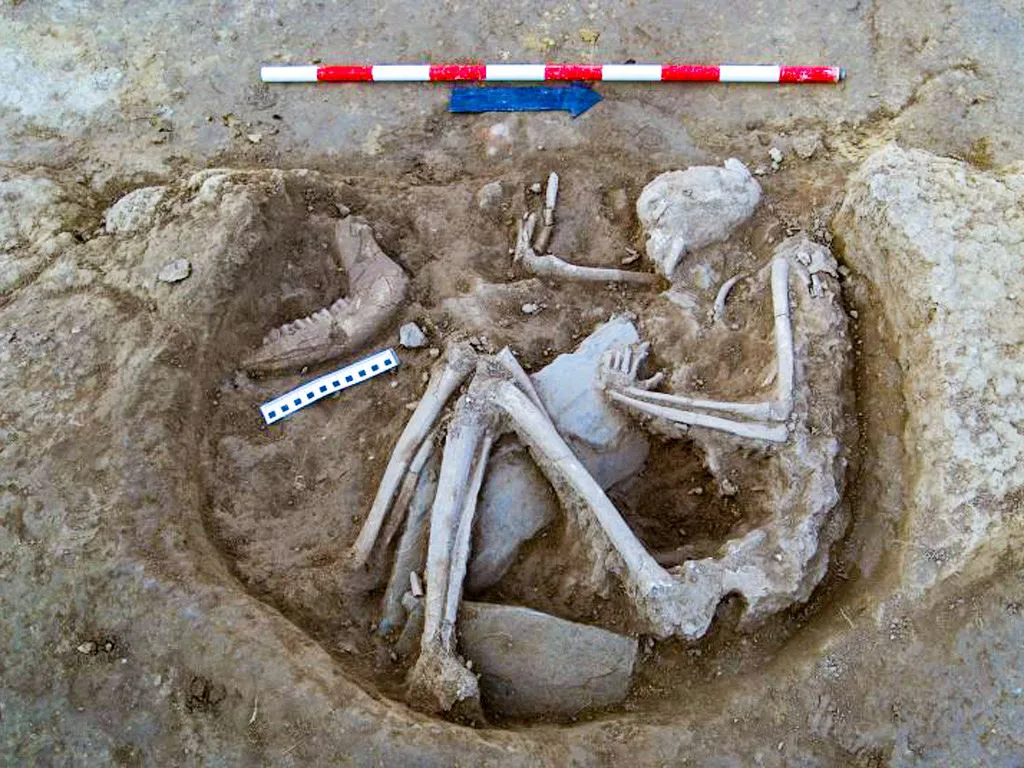
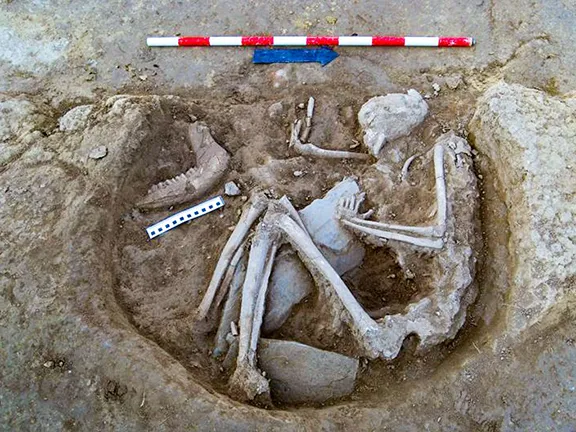
Pit burial at Valencina de la Concepcion, Seville province
Invariably, in situations where the Argarian society is introduced to a pre-existing community, there is a definite, clear line in the archaeological strata that divides the two implying that one followed the other with no transitional period. This is shown at the settlements of Almizaraque and Las Pilas in Almeria and El Malagón, in Granada province.
Interestingly, just north of the Argarian territories, in La Mancha, another group of people adopted similar building strategies to the Argarians by building motillas. These were human-made hills atop of which are placed fortified settlements. Their mound is usually between four and five meters high and the motillas are separated from each other by a distance of four to five kilometres. Their construction started about 2200 BC and they were used for about 1000 years. Such a coincidence of date for such radical change must surely imply a common cause. The motillas may have been inspired by the Argarian fortified settlement or built to defend the inhabitants against a belligerent neighbour.
In fact, this is probably a good place to look at what was happening elsewhere in Andalucia at the same time the Argarian society was becoming established.
Just west of the furthest extent of Argar territory is the Baza Depression. At the western end of that depression, on the eastern flanks of the Sierra de Baza, is Gorafe in the Gor river valley. It was surrounded by the ‘borders’ of Argarian territory on three sides, the north, east and south, occupying a bulge that protruded into Argarian territory in Granada province. As the crow flies, Gorafe is only 55 kilometres southwest of the Argarian settlement of Castellón Alto. This is the famous Gor valley megalithic community that became established about 3000 BC, then built hundreds of dolmens in a fairly confined area, and had up to 11 settlements, palisaded hamlets of perhaps 30 round dwellings with stone foundations and walls and pole and thatched roofs on low mounds. Their economy was based on mixed agriculture and pastoralism.
Their story, which is completely different to the Argar story, is related elsewhere. The point here is that the Gor river valley was home to that community until about 1500 BC. The palisades, in fact any form of defensive architecture around settlements, is still unusual in the 3rd millennium BC in the southwest of the Iberian Peninsula and may have been because of perceived or actual threats from the Argarians.
Near the town of Gor, at the head of the Gor river, is another type of settlement, Angosturas. Angosturas is built on a rocky promontory and does in fact resemble an early Argaric settlement with dwellings hewn into and built on the bedrock of the promontory, although the community that lived there show no signs of any other Argaric influence. It is likely that this settlement had a defensive wall built of stone. If so the occupants may have felt a need to defend themselves from their Argaric neighbours. Due to its proximity to the dolmen building community just a couple of kilometres away, and its seemingly identical foundation date, it was probably related to the settlements downriver. From the surveys conducted to date, Angosturas was occupied continuously from about 3000 BC to the Ibero-Roman period, about 200 BC.
Moving further west, down the Rio Guadalquivir, we meet even more settled communities. At Antequerra, in the so called Terra de Antequerra, over 100 settlements have been recorded spanning the dates of the Argarian society. No doubt their foci was the megalithic complex made up of the dolmens Menga (built ca 3600 BC), Vera (3600 – 3000 BC) and Romeral (ca 2500 BC).
Near Seville, Valencina de la Concepción, a social centre for outlying communities with mixed functions ranging from religious ceremonies to central market, to industrial workplaces and a place for feasting, was in use from about 3000 BC to 1500 BC. Individual inhumations at Valencina normally took place in pits.
West again into Huelva there were even more settled agricultural communities centred around the dolmens of Soto and Alberite.
Throughout Andalucia, west of the Argarian zone, there appears to be settled communities with an economy based on agriculture and pastoralism. Some align themselves with the already ancient and so-called ditched enclosures, some with the equally ancient dolmens.
In the far west, around the western end of the Sierra Morena, there was a lively copper mining and processing industry and well-established trade routes north into the Peninsula itself as well as across the water to North Africa.
All this stable activity pre-dated the appearance of the Argarians and in many cases post-dated them as well.
A long term study, coordinated by the Harvard Medical School, of DNA taken from bodies interred between the Mesolithic period and the Mediaeval period in the Iberian Peninsula is providing surprising results. Samples taken from a male cranium found in Bray's Cave, Gibraltar dated between 1496 and 1900 BC indicate that the Bronze Age Iberian population was replaced by individuals from the present-day steppes of Russia near the Black and Caspian Seas around 2000 BC. The study showed that a replacement of 40% of Iberia’s ancestry and nearly 100% of its Y-chromosomes by people with Steppe ancestry took place around the start of the 3rd millennium BC. The Bray's cave male is descended from those migrants.
References and further reading
Caramé, Manuel & Díaz-Zorita Bonilla, Marta & Sanjuán, Leonardo & Wheatley, David. (2010). The Copper Age Settlement of Valencina de la Concepción (Seville, Spain): Demography, Metallurgy and Spatial Organization. Trabajos de Prehistoria. 67. 10.3989/tp.2010.10032.
Díaz, María & Ramos, Ruth. (2018). La cosecha de El Garcel (Antas, Almería): estructuras de almacenamiento en el sureste de la península ibérica. Trabajos de Prehistoria. 75. 67. 10.3989/tp.2018.12204.
Hinz, Martin & Schirrmacher, Julien & Kneisel, Jutta & Rinne, Christoph & Weinelt, Mara. (2019). The Chalcolithic–Bronze Age transition in southern Iberia under the influence of the 4.2 ka BP event? A correlation of climatological and demographic proxies. 10.12766/jna.2019.1.
Lull, Vicente & Rihuete, Cristina & Micó, Rafael & Risch, Roberto. (2013). Political collapse and social change at the end of El Argar.
Murillo-Barroso, Mercedes & Bartelheim, Martin & Cortés, Francisco & Onorato, Auxilio & Pernicka, Ernst. (2012). The silver of the South Iberian El Argar Culture: A first look at production and distribution. Trabajos de Prehistoria. 69. 293-309. 10.3989/tp.2012.12093.
Olalde, Iñigo & Brace, Selina & Allentoft, Morten & Armit, Ian & Kristiansen, Kristian & Rohland, Nadin & Mallick, Swapan & Booth, Thomas & Szécsényi-Nagy, Anna & Mittnik, Alissa & Altena, Eveline & Lipson, Mark & Lazaridis, Iosif & Patterson, Nick & Broomandkhoshbacht, Nasreen & Diekmann, Yoan & Faltyskova, Zuzana & Fernandes, Daniel & Ferry, Matthew & Reich, David. (2017). The Beaker phenomenon and the genomic transformation of Northwest Europe. bioRxiv.
Olalde, Iñigo & Mallick, Subhashis & Patterson, Nick & Rohland, Nadin & Villalba-Mouco, Vanessa & Silva, Marina & Dulias, Katharina & Edwards, Ceiridwen & Gandini, Francesca & Pala, Maria & Soares, Pedro & Ferrando-Bernal, Manuel & Adamski, Nicole & Broomandkhoshbacht, Nasreen & Cheronet, Olivia & Culleton, Brendan & Fernandes, Daniel & Lawson, Ann & Mah, Matthew. (2019). The genomic history of the Iberian Peninsula over the past 8000 years. Science. 363. 1230-1234. 10.1126/science.aav4040.
Risch, Roberto. (2014). The La Bastida fortification: new light and new questions on Early Bronze Age societies in the western Mediterranean. Antiquity. 88. 395-410. 10.13140/2.1.2131.0082.
Risch, Roberto & Lull, Vicente & Micó, Rafael & Rihuete, Cristina. (2015). Transitions and conflict at the end of the 3rd millennium BC in south Iberia. 10.13140/RG.2.1.3881.1286.
MUSEO DE GALERA. Guía Oficial Septiembre de 2007